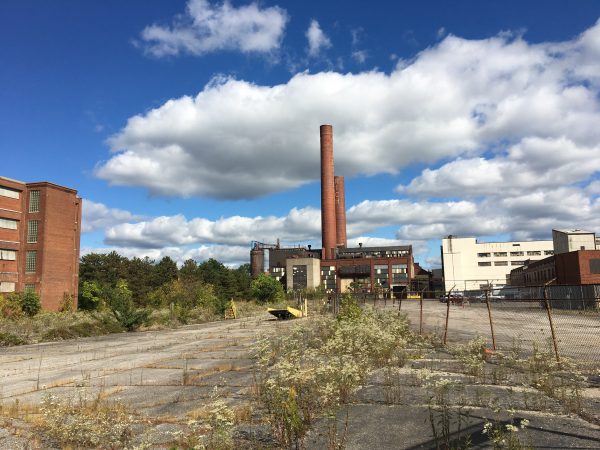On June 16, 2020, Governor Mike DeWine signed House Bill 168 into law, better aligning Ohio law with Federal law and putting Ohio in a more competitive position with respect to brownfield redevelopment and environmental liability protection.
A brownfield property is an unused or underutilized former industrial or commercial property with real or perceived environmental impairment. Due to potential environmental liability incurred by prospective developers, brownfield properties present several challenges for reinvestment, job creation, and economic development. Since the mid-1990s, the Ohio Voluntary Action Program (Ohio VAP) has provided a framework for managing contamination associated with redevelopment of brownfield properties, which are fairly common throughout Ohio.

In recognition of these environmental liabilities, Congress passed several laws in 2002 to add protective measures to innocent purchasers. One of these protections was the Bona Fide Prospective Purchaser (BFPP) provision. Some states followed suit and adopted laws that mirrored the BFPP provision; however, Ohio was not one of those. Even so, the Ohio VAP, coupled with public funding administered through the Clean Ohio Revitalization Fund (CORF), resulted in a significant increase in brownfield redevelopment activity from 2002 through 2013. The CORF funding has been fully dispersed; when former Governor John Kasich was elected, he passed the torch to JobsOhio to continue to provide funding for brownfield redevelopment.
Effective September 15, 2020, the House Bill 168 amends Ohio Revised Code (ORC) sections 3746.02 and 3746.05 and adds section 3746.122, which provides purchasers of Ohio brownfield properties additional protection from civil action by the State of Ohio and incorporates the BFPP defense.

To qualify, certain pre-acquisition and post-acquisition thresholds must be met. Prior to acquiring a property, a prospective purchaser must complete a process referred to as “all appropriate inquiries” (AAI), which is spelled out under the Comprehensive Environmental Response, Compensation, and Liability Act of 1980 (CERCLA). The AAI process requires the following steps by (or under the direct supervision of) an Environmental Professional:
- Review of federal and state environmental databases for the subject site and nearby properties;
- Review of historical resources (aerial photographs, city directories, fire insurance maps, zone maps, etc.);
- Interview(s) with individuals knowledgeable of current and historic use of the subject site; and
- Inspection of the subject site for indications of contamination or a material threat of release.
The U.S. EPA recognizes the use of ASTM International E1527-13 Standard for Phase I Environmental Site Assessments to meet the AAI obligations. Based on the AAI or the Phase I ESA, if there is indication that contamination exists or may exist on the subject site, the prospective buyer must meet certain threshold criteria and demonstrate compliance with continuing obligations (“common elements”). Continuing obligations include taking reasonable steps to stop any ongoing releases and preventing exposure. A prospective purchaser must also demonstrate that all legally required notices regarding the release of any hazardous substances were disclosed to the appropriate regulatory entity and must also demonstrate that disposal of hazardous substances occurred prior to property acquisition.
Both prior to and following property acquisition, the purchaser needs to provide full cooperation with regulatory entities, or their agents, in conducting response actions at the site. Continuing obligations, which can include activity and land use limitations and/or engineering controls, including reporting requirements and proper management of any hazardous substances, may be necessary, depending on the conditions of the site.

House Bill 168’s BFPP Defense Compared to the Ohio VAP Process
The BFPP defense from House Bill 168 may be less expensive and more timely compared to the Ohio VAP, but it will not likely include collaboration with regulatory authorities during the assessment and response stages. It may be more appropriate to use the Ohio VAP as your environmental liability management tool in more complex situations, such as:
- When a developer is contemplating the purchase and improvement of a more heavily contaminated property;
- When sensitive receptors are in play (for example, if a daycare, residential space, or school is built on top of the contaminated portion of property); and/or
- When a formal written liability release (i.e., Covenant Not-to-Sue) is required.
At any rate, the addition of the BFPP defense to the developer’s toolbox will help keep the redevelopment of Ohio’s brownfield properties a viable option and allow Ohio to compete with neighboring states for urban reinvestment.
If you would like additional information related to the role of the environmental consultant and AAI in helping meet Ohio’s BFPP defense or the Ohio VAP process, please contact Michael Coonfare (419-214-4412 or mcoonfare@cecinc.com) of CEC Toledo, Andy McCorkle (614-310-2071 or amccorkle@cecinc.com) of CEC Columbus, Jim Zentmeyer (513-483-3506 or jzentmeyer@cecinc.com) of CEC Cincinnati, or Brent Smith (614-310-1042 or brsmith@cecinc.com) of CEC Columbus.
Post a Comment